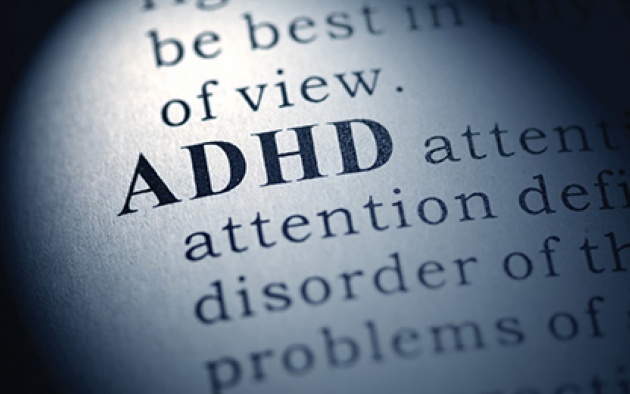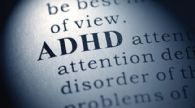Attention deficit hyperactivity disorder (ADHD) is one of the most common
behavioral disorders affecting both children and adults. American and
Canadian studies confirm that ADHD rates are on the rise. A recent
study by Université de Montréal1 revealed an increase in the number of children
taking prescribed ADHD medication. According to the study, the number of
children who were assessed to have ADHD increased to 59<>percentage<> in 2007 from 43<>percentage<> in
2000. Moreover, the authors of the study suggest that the consumption of
ritalin increased significantly since 1994 when the rate was 1.3<>percentage<>. What
could account for the increase in the ADHD diagnosis?
There are several reasons for this. For one, the ADHD diagnostic
criteria as defined in the Diagnostic and Statistical Manual of Mental
Disorders (DSM) has changed over time and fairly recently acknowledged adult
presentation. Also, there is greater societal awareness of ADHD and the
behavioral, social and academic challenges it may pose. As such, parents,
educators, students and professionals are more familiar with symptoms of ADHD,
and therefore, are in a better position to question the possible presence of
the disorder.
Much more troubling and adding to the increase in prevalence rates, is the
fact that ADHD diagnosis is generally based on subjective reports only.
Rating scales, such as the Conners, SNAP IV, or the Brown’s Attention Deficit
Disorder scales are typically used. Based on observations, parents, educators
and/or individuals are asked to complete these questionnaires. Although
these rating scales do have a place in the overall conclusion, they simply
cannot be used solely as the main source of information.
In order to avoid a possible misdiagnosis, a comprehensive and objective
evaluation is necessary, as the symptoms of ADHD are not specific only to
ADHD. ADHD symptoms frequently overlap with other disorders and
conditions. Mood disorders, language disorders and learning disabilities
to name a few, may share the same behavioral manifestations or
symptomatology. Therefore, a proper diagnosis must exclude any other
possible conditions or disorders that might mimic and account for the presence
of ADHD-like symptoms.
A comprehensive evaluation should include a clinical and family history,
behavioral observations, cognitive assessment, behavioral rating scales, as
well as measures that provide more objective information of the individual’s
attention and executive functions. Such measures include tests of
attention and other neuropsychological tests.
ADHD is not always simply a problem of sustaining attention,
distractibility, impulsivity or hyperactivity. It is rather a syndrome of
various elements that comprise what is called executive functions. These
skills are a set of neurologically based processes that help us manage and
control all kinds of life tasks and emotions. In short, these skills
provide a sense of readiness, flexibility, persistence, planning and
organization. They also provide information on the individual’s ability to
adjust to new rules and new situations, delay gratification, inhibit automatic
responses, and make decisions, especially in times of uncertainty.
Deficits in one or more of these areas can result in a number of
difficulties which are typically seen and labeled as laziness,
procrastination, forgetfulness, oppositional behaviors, difficulty paying
attention and completing assignments or chores, and so forth.
Common ADHD treatment approaches usually include pharmacological
intervention, parent training and behavior management techniques, while
information about the status of the higher level thinking skills or executive
functions are too often ignored. It is only with an understanding of
the specific thinking skill or skills that are in need of support will a more
precise intervention plan be possible, thus making living with ADHD somewhat
easier for the individual, family and/or educators.
In summary, given the ambiguous behavioral manifestations of ADHD, a proper
and accurate diagnosis can be problematic. A simple but effective approach to
the problem of ADHD evaluation is through a comprehensive evaluation performed
by a professional who has the capacity to make a differential diagnosis.
Although such an assessment can be time consuming and quite costly, it is a
prerequisite to ensuring an accurate diagnosis. When choosing to work
with a professional, it is important that you ask specific questions about
the evaluation process and what it consists of, as well as the costs. By
doing so, you will ensure receiving a more objective rather than a subjective
ADHD diagnosis simply based on observable symptoms, along with individualized
information on the type of supports and accommodations needed in order to
achieve personal success.
About the author
Elizabeth Shoiry, B.Sc., B. Sc., M.Ed OPQ
Licensed Neuropsychologist
Private Practice
4226 Boul. St. Jean, Suite 205
DDO, Qc
H9G 1X5
careershoe@gmail.com
(514) 736-0793

 In The Latest Issue:Latest Issue:
In The Latest Issue:Latest Issue:
- A Bittersweet Farewell
- The new Laval Aquatic Co...
- The End of an Era:
Articles
Calendar
Virtual- ANNUAL TEACHER APPRECIATION CONTEST
- APPUI LAVAL
- ARTS & CULTURE
- CAMPS
- CAR GUIDE
- CCIL
- CENTENNIAL ACADEMY
- CHARITY FUNDRAISING
- CITYTV
- COSMODÔME
- COMMUNITY CONNECTIONS
- COVER STORY
- DINA DIMITRATOS
- ÉCOLE SUPÉRIEURE DE BALLET DU QUÉBEC
- EDITORIALS
- ÉDUCALOI
- EDUCATION
- EMPLOYMENT & ENTREPRENEURSHIP
- FÊTE DE LA FAMILLE
- FÊTE DU QUARTIER SAINT-BRUNO
- FAMILIES
- FESTIVAL LAVAL LAUGHS
- FÊTE DE QUARTIER VAL-DES-BRISES
- FINANCES
- GLI CUMBARE
- GROUPE RENO-EXPERT
- HEALTH & WELL-BEING
- 30 MINUTE HIT
- ANXIETY
- CHILDREN`S HEALTH & WELLNESS
- CLOSE AID
- DENTAL WELLNESS
- EXTREME EVOLUTION SPORTS CENTRE
- FONDATION CITÉ DE LA SANTÉ
- GENERAL
- HEARING HEALTH
- MESSAGES FROM THE HEALTH AGENCY OF CANADA
- MENTAL HEALTH
- SEXUALITY
- SOCIAL INTEGRATION
- SPECIAL NEEDS
- TEENS
- THE NUTRITION CORNER
- THE NUTRITION CORNER - RECIPES
- VACATION DESTINATION
- WOMEN'S FITNESS
- WOMEN'S HEALTH
- HILTON MONTREAL/LAVAL
- HOME & GARDEN
- INTERNATIONAL WOMEN'S DAY
- JAGUAR LAVAL
- LAVAL À VÉLO
- LAVAL FAMILIES TV SHOW
- LAVAL FAMILIES MAGAZINE CARES
- LAVAL URBAN IN NATURE
- LE PARCOURS DES HÉROS
- LES PETITS GOURMETS DANS MA COUR
- LEON'S FURNITURE
- LEONARDO DA VINCI CENTRE
- LFM PREMIERES
- LIFE BALANCE
- M.P. PROFILE
- MISS EDGAR'S AND MISS CRAMP'S SCHOOL
- MISSING CHILDREN'S NETWORK
- NETFOLIE
- NORTH STAR ACADEMY LAVAL
- OUTFRONT MEDIA
- PASSION SOCCER
- PARC DE LA RIVIÈRE-DES-MILLE-ÎLES
- PÂTISSERIE ST-MARTIN
- PIZZERIA LÌOLÀ
- PLACE BELL
- PORTRAITS OF YOUR MNA'S
- ROCKET DE LAVAL
- SACRED HEART SCHOOL
- SCOTIA BANK
- SHERATON LAVAL HOTEL
- SOCIÉTÉ ALZHEIMER LAVAL
- STATION 55
- STL
- SUBARU DE LAVAL
- TECHNOLOGY
- TEDXLAVAL
- TODAY`S LAURENTIANS AND LANAUDIÈRE
- TODAY`S LAVAL
- WARNER MUSIC
- THIS ISSUE
- MOST RECENT
Magazine
Is it really ADHD?
Articles ~e 105,7 Rythme FM 4 chemins Annual Teacher Appreciation Contest Appui Laval Arts & Culture Ballet Eddy Toussaint Camps THIS ISSUE MORE...
CONTESTS Enter our contests
CONTESTS Enter our contests
CALENDAR
Events & Activities
COMMUNITY Posts Events
PUBLICATIONS Our Magazine Family Resource Directory
LFM BUSINESS NETWORK Learn more
COUPONS Click to save!
COMMUNITY Posts Events
PUBLICATIONS Our Magazine Family Resource Directory
LFM BUSINESS NETWORK Learn more
COUPONS Click to save!
SUBSCRIPTIONS
Subscribe to the magazine
Un-Subscribe
E-NEWSLETTER Subscribe to our E-newsletter Un-Subscribe
WRITE FOR US Guidelines & Submissions
POLLS Vote today!
E-NEWSLETTER Subscribe to our E-newsletter Un-Subscribe
WRITE FOR US Guidelines & Submissions
POLLS Vote today!
ADVERTISERS
How to & Media guide
Pay your LFM invoice
SUGGESTIONS Reader's Survey Suggest a Listing
LFM About Us Our Mission Giving Back Contact Us
SUGGESTIONS Reader's Survey Suggest a Listing
LFM About Us Our Mission Giving Back Contact Us
 PICK-UP LOCATIONS
Get a copy of LFM!
PICK-UP LOCATIONS
Get a copy of LFM!
TERMS & CONDITIONS Privacy | Terms
ISSN (ONLINE) 2291-1677
ISSN (PRINT) 2291-1677
Website by ZENxDESIGN



 BY:
BY: 
Tweet
Share